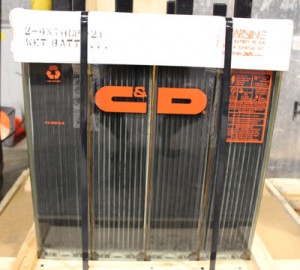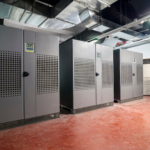Batteries have been around since the 19th century, when John Daniell invented the wet-cell battery. Daniell would likely be startled by the variety and sophistication of batteries in our day. Rechargeable batteries were one big step forward. The two incarnations therein – flooded and sealed rechargeable batteries – both have their advantages in applications ranging from vehicles to power supply grids.
About Rechargeable Lead-Acid Batteries
Rechargeable batteries were invented just a few decades after the original battery. There are several chemicals that can be used to create rechargeable batteries, but many larger models use a combination of lead and sulfuric acid. A rechargeable battery has the capacity to recharge when put in contact with a reverse current. Rechargeable batteries are extremely powerful for their size and make up nearly half of worldwide battery sales.
Flooded Rechargeable Batteries
Flooded rechargeable batteries, also known as wet-cell batteries, are closest to Daniell’s original battery in design. These batteries contain a liquid combination of water and sulfuric acid. They are generally more expensive and last longer than sealed batteries.
 Flooded rechargeable batteries are decidedly more high-maintenance than their sealed counterparts. Because flooded rechargeable batteries contain liquid, they must be oriented appropriately and can be damaged due to forceful movement (such as excessive shaking).
Flooded rechargeable batteries are decidedly more high-maintenance than their sealed counterparts. Because flooded rechargeable batteries contain liquid, they must be oriented appropriately and can be damaged due to forceful movement (such as excessive shaking).
Also, since they contain some water, flooded rechargeable batteries need regular care to maintain the correct levels of liquid. They have a reduced life in extreme climates, where the water inside them can evaporate or freeze. And since water will evaporate eventually even in the mildest weather, flooded rechargeable batteries can only be used with proper ventilation.
Despite these needs, flooded rechargeable batteries are still the best choice in reserve power applications. They are also widely used for backup power, utility, telecom and grid energy storage and in backup power supplies.
Sealed Rechargeable Batteries
Unlike flooded rechargeable batteries, sealed rechargeable batteries do not contain a liquid that will spill out if the battery breaks. Instead, sealed rechargeable batteries hold only enough liquid to allow the electrolytes to flow. These types of batteries are also known as maintenance-free batteries.
There are two types of sealed rechargeable batteries: gel and AGM (absorbed glass mat). Gel batteries contain a putty-like substance, while AGM batteries contain special acid-saturated fiberglass mats. AGM batteries are generally more powerful and cost-effective, but gel batteries offer more longevity.
Regardless of their differences, both sealed rechargeable batteries offer some important advantages. These advantages mostly stem from the fact that the sealed rechargeable battery electrolyte is completely absorbed in the separator and does not need water to be added. They require less regular maintenance or ventilation, and can withstand varying climates better than flooded batteries. Sealed rechargeable batteries also tend to charge faster than flooded batteries. However, sealed rechargeable batteries do not last as long as flooded batteries. Accidental overcharging or undercharging can exacerbate this effect on both flooded and sealed batteries.
Sealed rechargeable batteries are often found in off-grid power systems, including environmentally friendly systems like solar and wind power. They are also used in uninterrupted power supply systems, as well as in robotics and some ATVs and motorcycles.
Both flooded rechargeable batteries and sealed rechargeable batteries perform important functions in our society. They supply our vehicles, emergency power supplies, and even power grids with the energy they need to function. In short, we’ve come a long way since the 19th century.







Good explanation!! Can wet and sealed be mixed? And if so, how?
What should be the best charging routine for the 24V (2x12v)/28AH battery of my wheelchair ? with a full charge I can go 20km/12miles but I mainly use it at home and with my usage, the battery charge would last for almost 2 weeks. But I know that deep discharging would decrease the life of a SLA battery. Is it okay for me to charge the battery every week or should I charge the battery daily ?. Please suggest the best possible routine for charging the batteries so that I could get most out of the battery and also increase the life of the battery to the maximum extent possible.